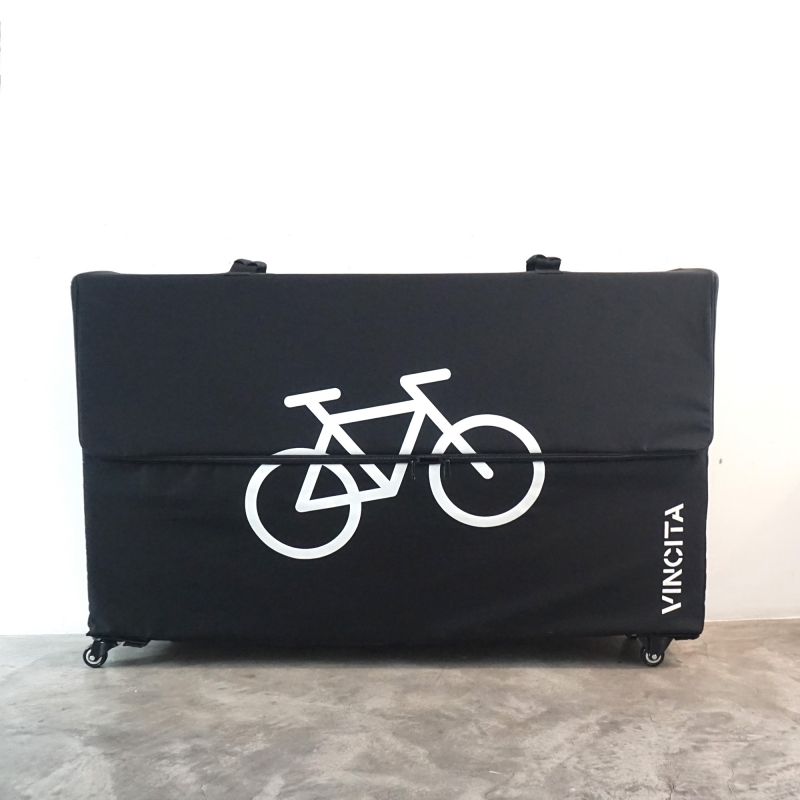The average bike box weighs between 25 and 30 pounds.
Bike boxes are a great way to transport your bike, but they can be a bit on the heavy side. The average bike box weighs between 30 and 40 pounds. That’s not including the weight of your bike, of course!
So, if you’re looking to ship your bike, you’ll need to factor in the weight of the box when deciding how much it will cost.
Bike Box Dimensions And Weight
Bike boxes come in a variety of shapes and sizes, but they all have one thing in common: they’re designed to protect your bike during shipping. Here’s a look at some of the most popular bike box dimensions and weights so you can choose the right one for your needs.
Standard Bike Boxes
Most standard bike boxes are between 36″ and 40″ long, 26″ wide, and 10″ tall. They typically weigh between 30 and 35 pounds. These dimensions make them ideal for shipping bikes via UPS or FedEx.
Some companies also offer custom-sized bike boxes, so be sure to check with your chosen shipper before ordering.
Heavy-Duty Bike Boxes
For heavier bikes, or for those who want extra protection during shipping, heavy-duty bike boxes are available.
These boxes are typically 42″ long, 28″ wide, and 12″ tall. They weigh between 40 and 50 pounds. As with standard bike boxes, some companies offer custom sizing for an additional fee.
Bike Crates
For the ultimate in protection during shipping, many cyclists opt for a crate. Bike crates are made from wood or plastic and typically measure 48″ x 30″ x 24″.
They can weigh anywhere from 50 to 100 pounds depending on the materials used and the size of the crate. Shipping costs will be higher for a crate than for a standard box due to the increased weight, but it offers peace of mind knowing that your bike is well-protected against damage during transit.
Bike Box Dimensions in Cm
Whether you’re a professional cyclist or a leisurely weekend warrior, keeping your bike in good working order is essential to enjoying the ride. Part of maintaining your bike is making sure it’s the right size for you. That means knowing the dimensions of your bike, including the size of the frame and wheels.
When it comes to sizing up your bike, one of the first things to consider is the width of the tires. Most road bikes have tires that are about 23 millimeters wide, while mountain bikes usually have tires that are wider, about 2.4 inches (60 millimeters). The width of your tires will affect how much air they can hold, which in turn affects how comfortable they are to ride on and how fast they can go.
The next thing to think about is the frame size. The frame is measured from the top tube (the horizontal bar that goes from one handlebar to the other) to the center of the crank axle (where the pedals attach). The ideal frame size for a road bike is between 53 and 59 centimeters, while a mountain bike frame should be between 43 and 58 centimeters.
Finally, take a look at wheel sizes. Most road bikes have wheels that are 700c in diameter (about 27 inches), while mountain bikes have 26-inch wheels. Wheel sizes can vary slightly depending on tire width and frame size, but these are generally considered standard sizes.
Knowing these basic dimensions will help you narrow down which type of bike is right for you when shopping for a new ride. And once you’ve got your perfect set-up, don’t forget to properly maintain it so you can keep cycling for years to come!
Bike Box Dimensions for Airlines
Bike boxes are a great way to transport your bike when flying, but it’s important to know the dimensions of the box before you purchase one. Here are the dimensions for some of the most popular bike boxes:
– Bike Box 24: 24″ x 24″ x 10″
– Bike Box 30: 30″ x 30″ x 12″
– Bike Box 36: 36″ x 36″ x 14″
If you’re not sure which size bike box is right for you, ask your local bike shop or airline.
Bike Box Dimensions 29Er
When it comes to bike boxes, there are a few different dimensions to consider. For example, 29er bikes typically have longer wheel bases than 26ers. This means that the box for a 29er bike will be longer and wider than a 26er box.
Additionally, 29ers often have suspension forks which can add even more length to the overall bike length. It’s important to measure your bike before choosing a box so that you can be sure it will fit properly.
There are also some other things to keep in mind when selecting a bike box.
For instance, if you plan on traveling with your bike by air, you’ll want to make sure the box is designed for air travel. Some boxes are not meant to be used with airlines and could result in damage to your bike during transit. There are also boxes specifically designed for road biking and mountain biking.
If you know what type of riding you’ll be doing most often, it can help narrow down your choices.
Ultimately, the best way to choose the right bike box is to measure your bicycle and then compare those dimensions to the various options available on the market. By taking these simple steps, you can be confident that your beloved two-wheeled steed will arrive safely at your destination no matter how far from home it may be!
Mountain Bike Box Dimensions Cm
Mountain biking is a great way to get outdoors and explore nature. But, before you hit the trail, you need to make sure your bike is properly packed. Here are some tips on mountain bike box dimensions to help you get started.
The first thing you need to do is measure your mountain bike. You’ll need to know the length, width, and height of your frame in order to choose the right sized box. Most mountain bikes will fit in a standard size shipping box, but it’s always best to check with your specific bike brand or model just to be sure.
Once you have your measurements, you can start shopping for boxes. There are plenty of online retailers that sell shipping boxes specifically designed for bicycles. These boxes usually come equipped with foam padding and other features to protect your bike during transit.
When choosing a box, make sure to pick one that’s slightly larger than your mountain bike’s dimensions. This will give you some wiggle room for packing materials like bubble wrap or newspaper around the frame. It’s also important to leave enough space so that the suspension forks don’t get damaged during shipping.
Once you have your box picked out, it’s time to start packing! Begin by wrapping the frame in some soft material like a towel or quilt. Then, use bubble wrap or packing peanuts around vulnerable parts like the suspension forks and handlebars.
Finally, close up the box and seal it with heavy-duty tape.
Label the box clearly with “FRAGILE” stickers and write down the address of your final destination . With these tips in mind ,you’ll be able pack up your mountain bike for shipment without any problems .

Credit: sportalleshop.com
What Does a Bike Box Weigh?
Bike boxes come in a variety of sizes and weights. The average bike box weighs between 18 and 20 pounds. However, some bike boxes can weigh as much as 30 pounds.
Bike boxes are typically made out of cardboard or plastic and are used to store and transport bicycles.
What Size And Weight is a Bike Box?
If you’re planning on traveling with your bike, you’ll need to pack it in a bike box. But what size and weight is a typical bike box?
The dimensions of a bike box can vary depending on the make and model of the box, but they are typically around 27″ x 27″ x 7″.
The weight of a bike box is also variable, but is usually between 15 and 20 pounds.
When packing your bike in a box, be sure to pad it well to protect it from bumps and scratches. You’ll also want to remove any loose items like water bottles or pumps that could rattle around during transit.
And finally, be sure to label the box clearly so that it doesn’t get lost in the shuffle!
How Big is a Standard Bike Box?
A standard bike box is usually between 50 and 70 centimeters high, 30 to 40 wide, and 20 to 30 deep. The width and depth will depend on the size of the bike frame and wheels. For example, a road bike with 700c wheels will have a wider box than a mountain bike with 26″ wheels.
How Much Does an Average Bike Weigh?
How much does an average bike weigh? This is a question that gets asked a lot, but it’s not always easy to answer. It depends on the type of bike, the materials it’s made from, and the size of the bike.
A lightweight racing bike could weigh as little as 15 pounds, while a heavy duty mountain bike could weigh 30 pounds or more.
How Much Does Your Bike Weigh? GCN Asks The Pros At The UAE Tour
Conclusion
The bike box is a great way to transport your bike, but you need to be aware of the weight. It can be very heavy and it is important to make sure that you have a good way to transport it. If you do not have a good way to transport it, then you may want to consider renting one from a local bike shop.
